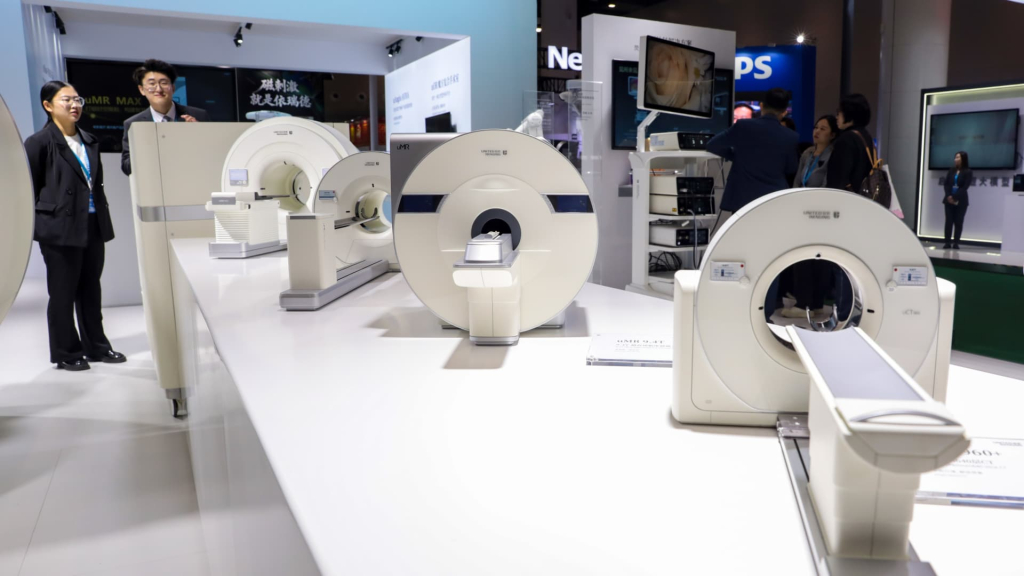The tariff policies set by President Donald Trump are creating a rift within the medical community.
During his first term, medical devices and protective equipment originating from China, Mexico, and Canada were exempt from tariffs. However, the latest set of tariffs has yet to provide similar exemptions. Device manufacturers who would be significantly affected are advocating for a new exclusion, while producers of personal protective equipment (PPE)—who might gain from the tariffs—are remaining silent.
This increase in duties could lead to higher costs for hospitals and ultimately, patients, while also limiting access to essential medical supplies and care.
“MedTech supply chain leaders are already reporting concerns regarding supply chain disruptions, and we cannot afford to inflate healthcare costs for patients or the overall health system,” stated Scott Whitaker, CEO of the Advanced Medical Technology Association, which represents medical technology and device manufacturers. “Ultimately, any price increases will primarily impact taxpayer-funded health programs such as Medicare, Medicaid, and the VA.”
Hospital associations are echoing these concerns, warning that tariffs could negatively impact the standard of care.
“The American Hospital Association has consistently communicated to the Administration that disruptions in the availability of essential devices—many of which are sourced internationally—could compromise patient care,” remarked Rick Pollack, CEO of the American Hospital Association. “We continue to advocate for a tariff exclusion for medical devices to ensure hospitals can effectively serve their patients and communities.”
Tariffs Bring Pricing Challenges
In February, Trump imposed 25% tariffs on imports from Canada and Mexico, although many items under the U.S.-Mexico-Canada Agreement had their duties postponed.
On the other hand, no relief has been offered for imports from China, where Trump’s latest tariffs have raised the duty rate to 145%.
Additionally, tariffs of 10% have been levied on imports from numerous other countries, after Trump postponed more stringent rates.
Medical Equipment Sellers Under Pressure
While many industries can simply raise their prices to offset the increased tariff expenses, healthcare organizations purchasing medical equipment face a different reality.
These institutions often find it challenging to pass on elevated costs due to current insurance contracts that lock in prices for the year.
“With the current tariff levels on Chinese imports, companies will struggle with these products… they cannot shift those costs to consumers,” explained Casey Hite, CEO of Aeroflow Health, a company specializing in insurance-covered medical devices, including breast pumps and CPAP machines.
Hite spent last week engaging with lawmakers on Capitol Hill, advocating for a comprehensive MedTech tariff exemption—or at least a grace period for adjustment.
“We are looking for a more predictable path forward, either over the next 12 months or two years, to allow U.S. organizations to prepare,” Hite remarked.
PPE Manufacturers Stand to Gain
Conversely, U.S. manufacturers of personal protective equipment are expressing approval of the Trump administration’s latest tariffs on China.
“While I cannot speak to the overall economic impact, I can say that both Republican and Democratic administrations have recognized that these products do not compete on equal footing,” noted Eric Axel, CEO of the American Medical Manufacturers Association, which represents PPE manufacturers.
According to analysts from Boston Consulting Group, approximately half of the PPE used domestically is sourced from China, with about 10%-15% coming from Canada and Mexico.
The new tariffs add to previously established duties imposed last fall by the Biden administration, including a 100% tariff on syringes and needles imported from China, bringing the total tax on these items to 245%.
Altor Safety, a U.S. manufacturer of masks, N95 respirators, and gloves, has welcomed the tariffs, citing difficulties in competing with Chinese companies that benefit from government subsidies.
Thomas Allen, president of Altor, believes the new tariffs could enable the company to secure new contracts, stating that as they expand their capacity, “we can actually lower our prices.”
Challenges for U.S. Manufacturing
Trump justified the imposition of tariffs as a means to bolster U.S. manufacturing. However, in the context of PPE, whether this strategy will succeed is doubtful.
Short-term analysis suggests that multinational manufacturers are more inclined to relocate production from China to countries with lower tariff rates instead of reinstating operations in the U.S.
“The complexity of managing this transition proves to be extremely challenging,” explained Vikram Aggarwal, a managing director and partner at BCG.
To navigate tariffs, American medical device and protective gear manufacturers are considering shifting production to Mexico and Canada to take advantage of potential exemptions under the USMCA.
While many major medical technology firms produce a significant portion of their products domestically, they also maintain several international manufacturing locations. Analysts from Canaccord Genuity report that firms such as Zimmer Biomet and Stryker, leaders in knee replacement production, utilize numerous facilities across North America, Europe, and Asia to manage tariff complexities, although they still face financial repercussions.
J&J Projects $400 Million Tariff Impact
Johnson & Johnson forecasts that its MedTech division, responsible for orthopedic and cardiac implants, could encounter a $400 million impact from tariffs this year, driven mainly by the extensive duties on imports from China and additional levies on imports not compliant with USMCA from Canada and Mexico.
As one of the earliest MedTech companies to disclose its first-quarter results, J&J provided insights into the implications of tariffs. CFO Joseph Wolk informed analysts during the company’s earnings call that the existing contracts with hospitals make it challenging to increase prices immediately.
In the longer term, J&J CEO Joaquín Duato asserted that the disruptive nature of tariffs does not incentivize increased manufacturing within the U.S.
“If the objective is to enhance manufacturing capacities in the U.S., both for MedTech and pharmaceuticals, then the most effective approach is not through tariffs but through tax policies,” Duato explained, noting that the company plans to invest $55 billion over the next four years in American production of advanced medicines.
“Tax policy serves as a much more effective tool for fostering domestic manufacturing in both the MedTech and pharmaceutical sectors,” he added.


























